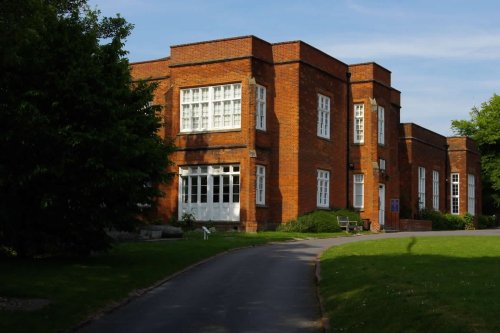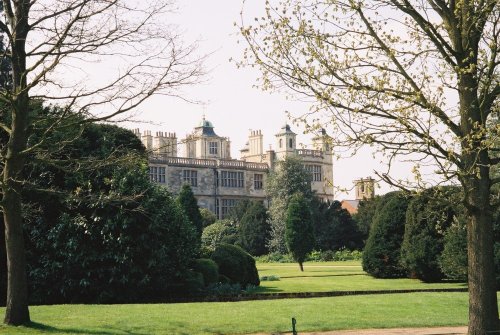Pictures of Saffron Walden
About Saffron Walden
The outstanding feature of Saffron Walden is its rich variety of properties tangled around its web of ancient streets. The centre of the town is built around a street plan unchanged since 1141 when Geoffrey de Mandeville established a market beneath his castle walls. All that is left of the castle is a few stumps standing on a grassy mound at the highest point of the town. Near to the castle is the largest turf maze in England, it is cut into the turf of the common, is circular and about 100 feet in diameter. The earliest record of the maze is 1699, it has been restored several times, most latterly in 1979.
Close to the corner of picturesque Castle Street and Church Street there is another maze. This is a hedge maze, access to this can be gained via the tourist information centre.
Dominating both the town and the castle site is the soaring church spire of St. Mary's church, this reaches to a height of 193 feet. The spire, an addition of the 19th century, perfectly sets off what is known to be the largest church in Essex - 184 ft long by 80 ft wide. The church is a rebuild of an earlier church, it was completed in the 15th century and has an overwhelmingly beautiful interior which reflects the wealth and prosperity of the wealthy merchants of the era who gave so generously to the church.
Saffron Walden has some of the most stunning properties of anywhere in England. The fine City Hall shows three splendid stone bays, above these the rest of the building is covered with intricate black and white timber framing. Fine decorative plasterwork, called Pargeting can be seen adorning many of the town's properties, this can be seen at its best together with fine medieval woodwork to the fascia of a building occupied by Lankesters Antiques. The impressive Saffron Hotel is a former coaching inn of the early 17th century. The town possesses many quaint inns, shops with tiny doorways, heavy beams and sloping floors and a rich array of medieval merchant houses, there is also some impressive sculpture at the town centre.
The fortunes of the town originally sprang from wool and cloth, then in the 14th century it was discovered that the Saffron Crocus grew well in the local soil. The trade in saffron - used in dying, medicine and cooking flourished, bringing a new kind of prosperity - this continued well into the 18th century.
Saffron Walden museum began in 1835, it occupies a fine site close to the remains of the old castle, with plenty of places to enjoy an outdoor picnic. Inside, the museum is a mine of information, its galleries have fine displays, and it fully covers the history and heritage of the region.
Tourist attractions include Audley End, a romantic manor house built by the Earl of Suffolk in the 17th century on the site of Walden Abbey. When first built it was one of the largest and grandest houses in England. However, maintenance proved difficult, thus two thirds of the property was later demolished. Audley End is now in the care of English heritage, both house and grounds are open daily to the public.
For sheer amusement you must try Audley End Miniature Railway, a 10.1/4" gauge, taking you on a delightful ride through a wooded landscape filled with teddies. It is especially appealing to small children and much enjoyed by adults.
The eminent Gibson family, well known Quakers, with business interests in banking and brewing are commemorated in the town by Bridge Eng Gardens, originally laid out by Francis Gibson in the 1840's. This lovely landscaped site can be found at the northern edge of the town.
Try not to miss out on the Imperial War Museum's aviation collection at Duxford and Thaxted Windmill.
As you can imagine, this sedate and pleasant town has everything for your enjoyment, streets crammed with shops, antique centres and galleries, historic inns, pubs, relaxing bars, cafe's and restaurants. And in the evening twilight you will find pleasant gardens to stroll in.
A number of noted people have been born, or lived in Saffron Walden, these include the notorious Dick Turpin, Highwayman, who was born in the village of Hemstead in 1705. The creator of the first Eddystone Lighthouse, Henry Winstanley was born at nearby Littlebury, and others include Sir Thomas Smith, 16th century scholar and also from the 16th century, writer and poet Gabriel Harvey.
Saffron Walden, both town and surrounding countryside offer the perfect place to stay for a romantic, relaxing weekend. What could be more pleasant than ambling around centuries old buildings on a warm summers day? You could even stay in the towns oldest inhabited building, a picturesque black and white 600 year old former maltings, with uneven floors, oak beams and a colourful walled garden. This enchanting building, which still retains so much of its earlier character is now a Youth Hostel offering budget accommodation for families, couples and individual travellers. Otherwise the town offers a diverse range of accommodation, the choice is yours for there is something to suit all ages and all tastes.






